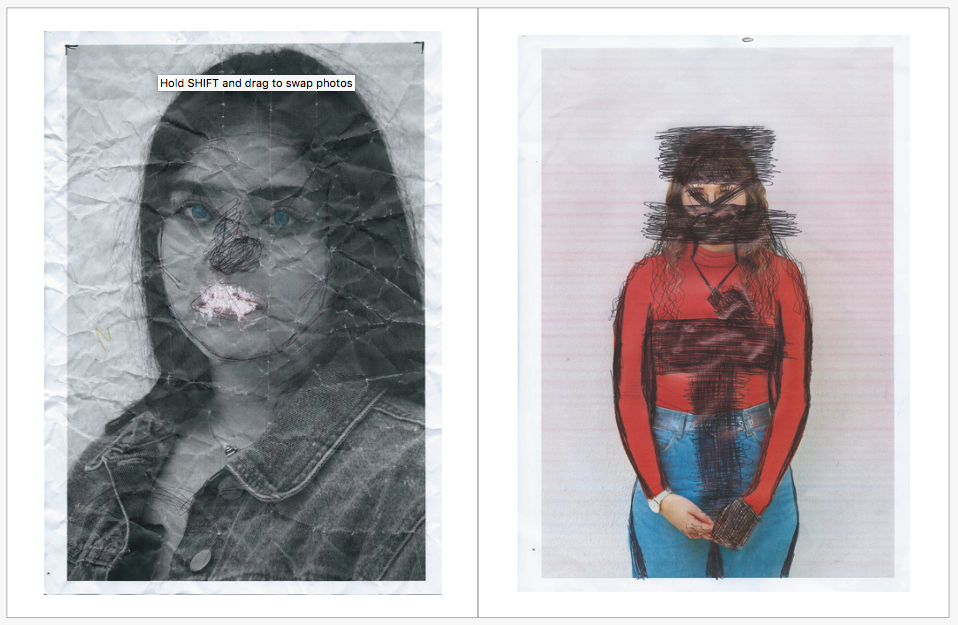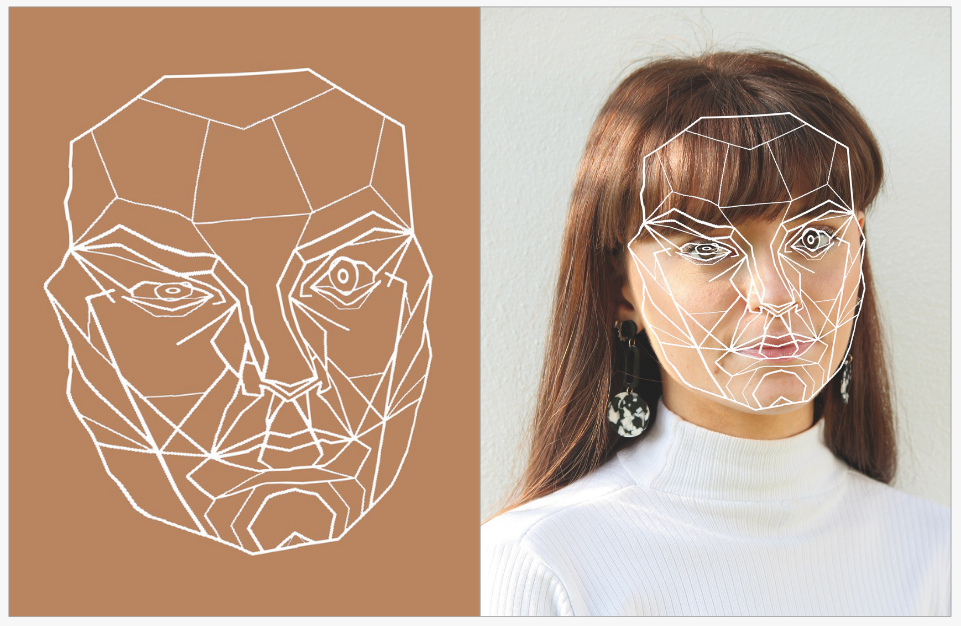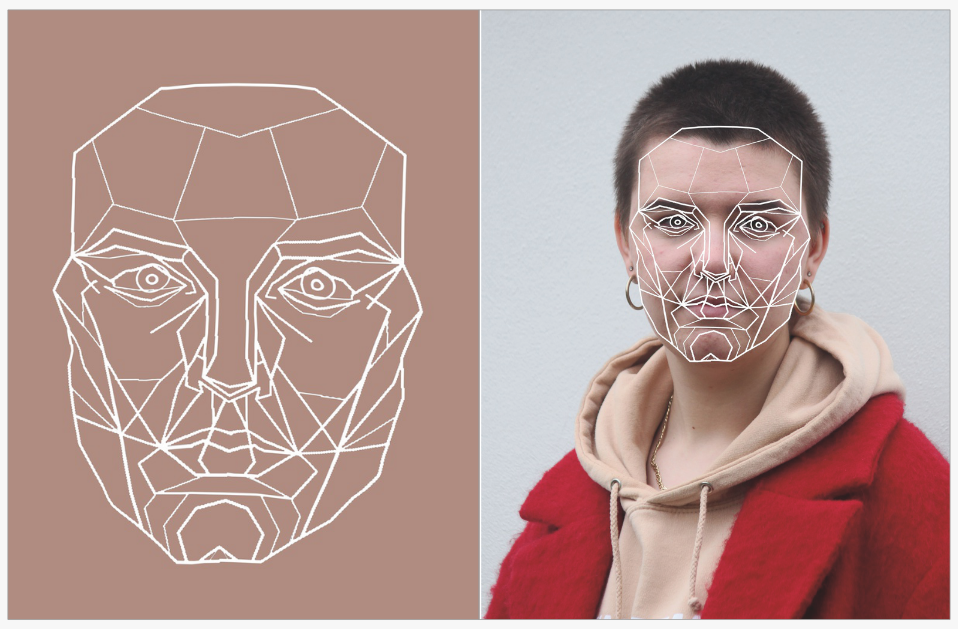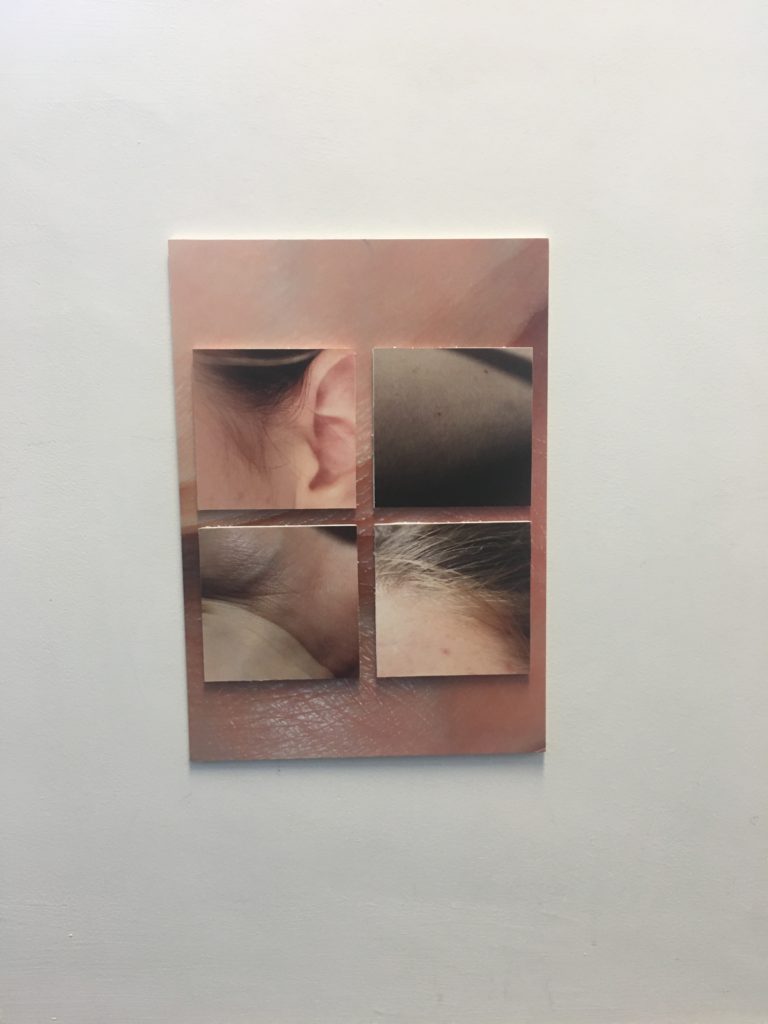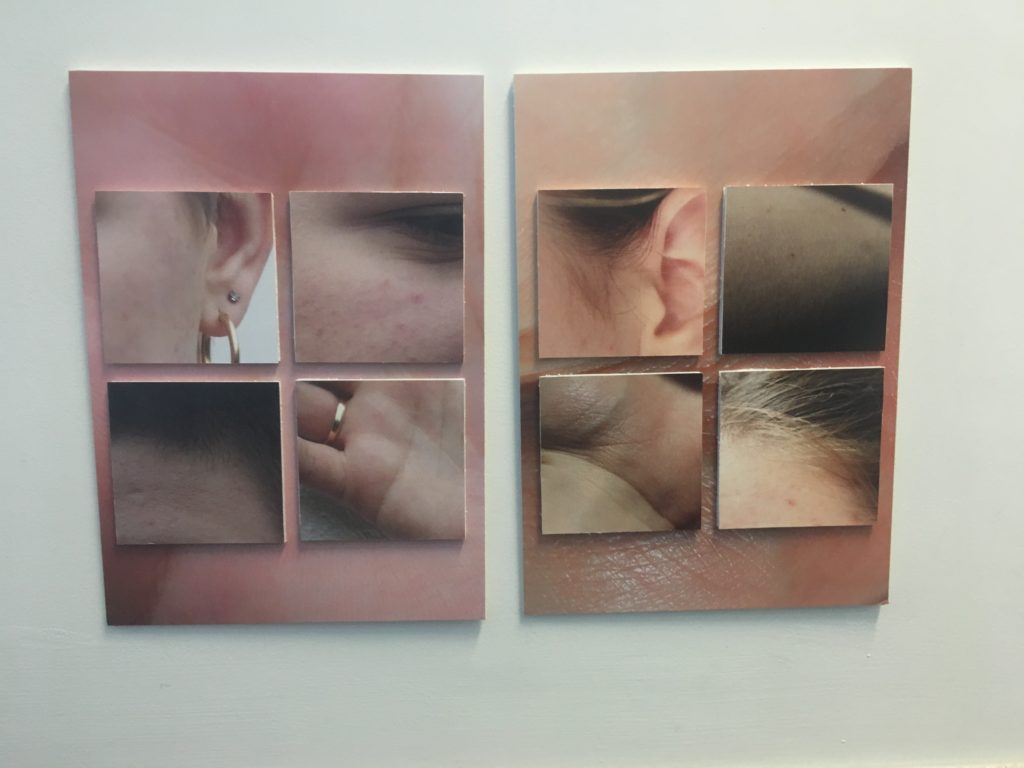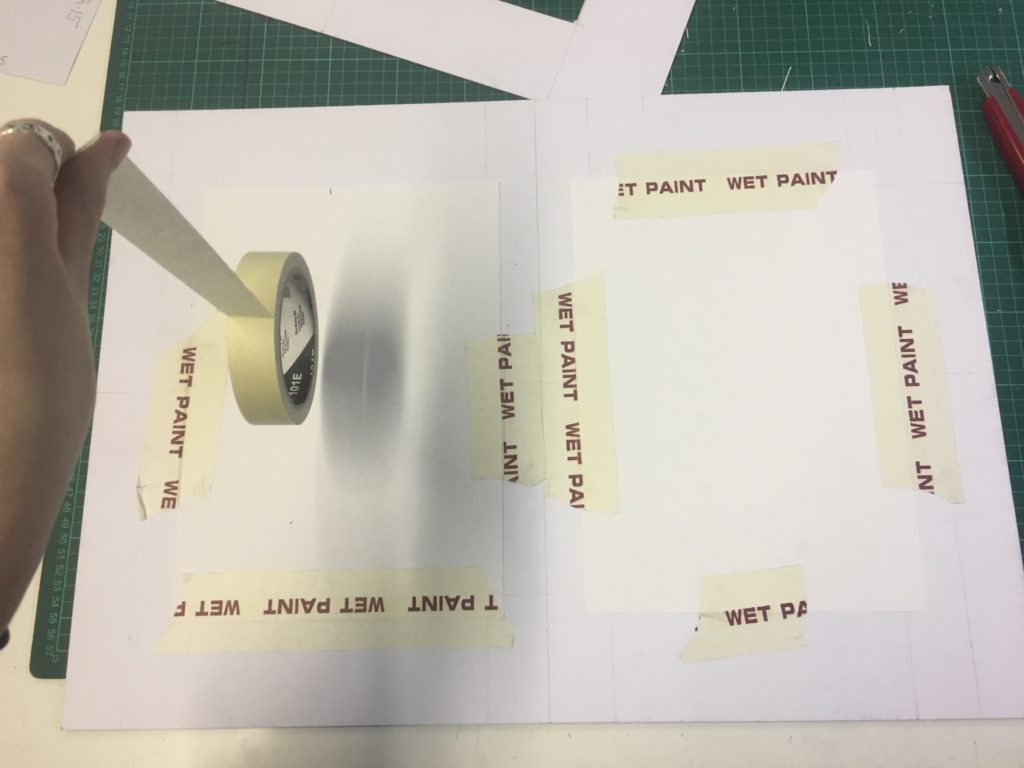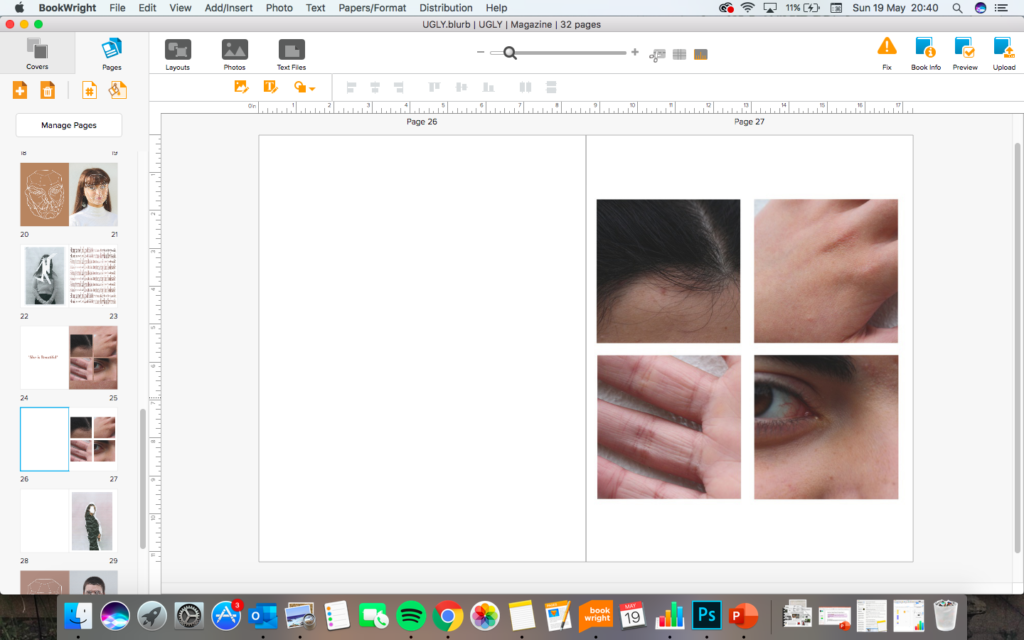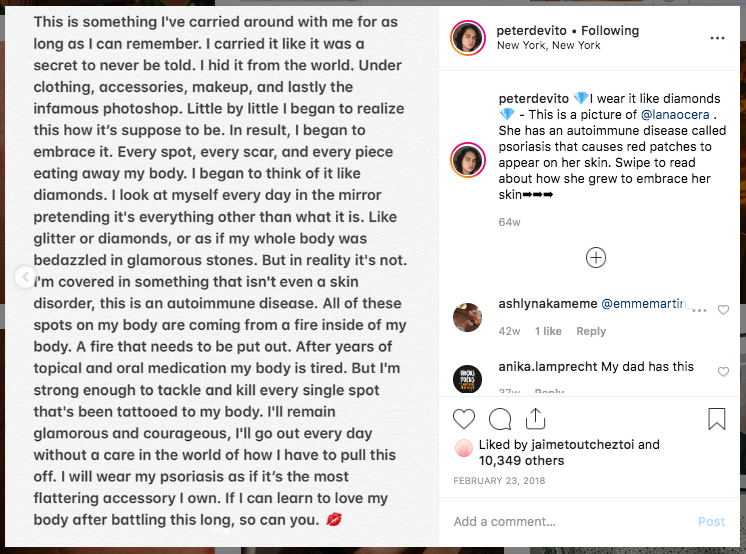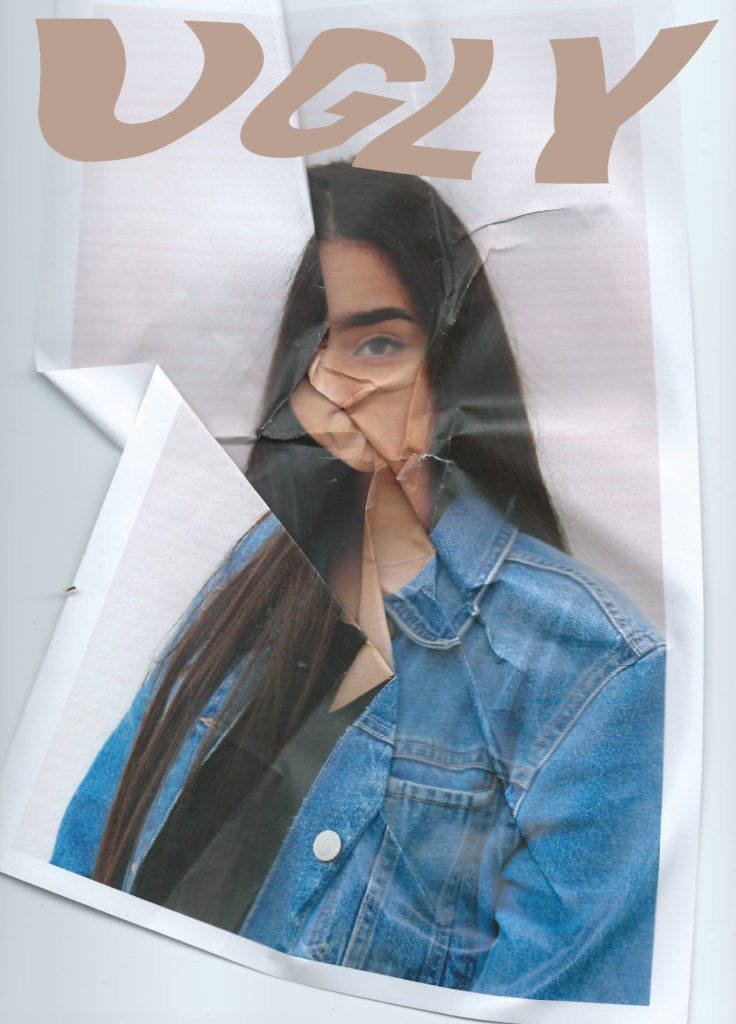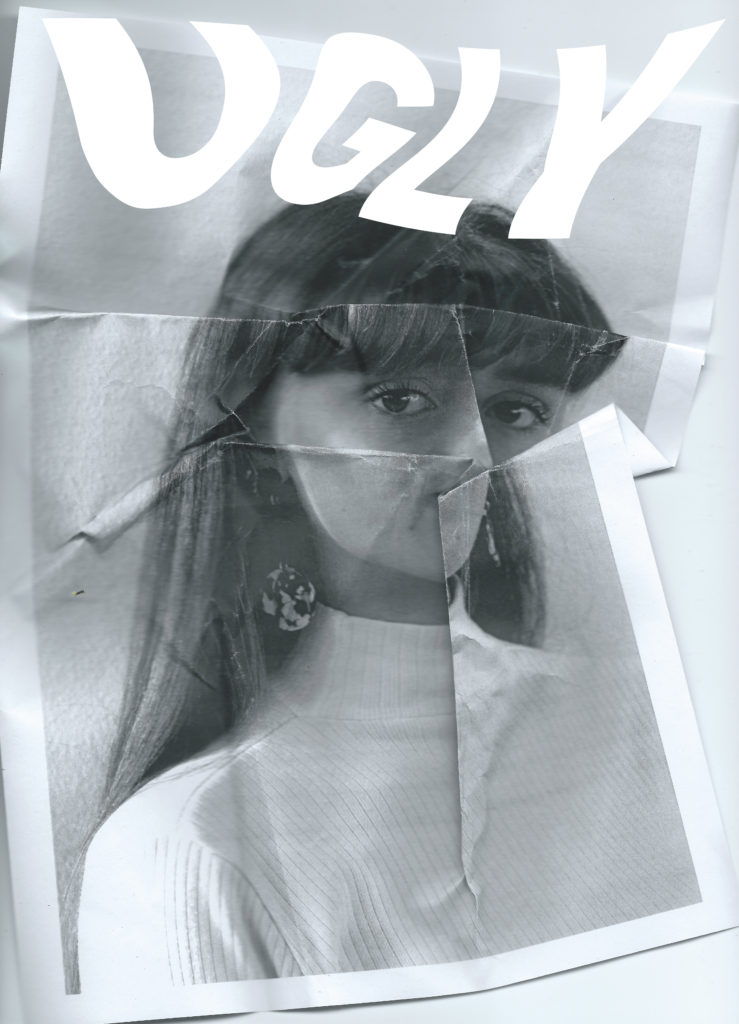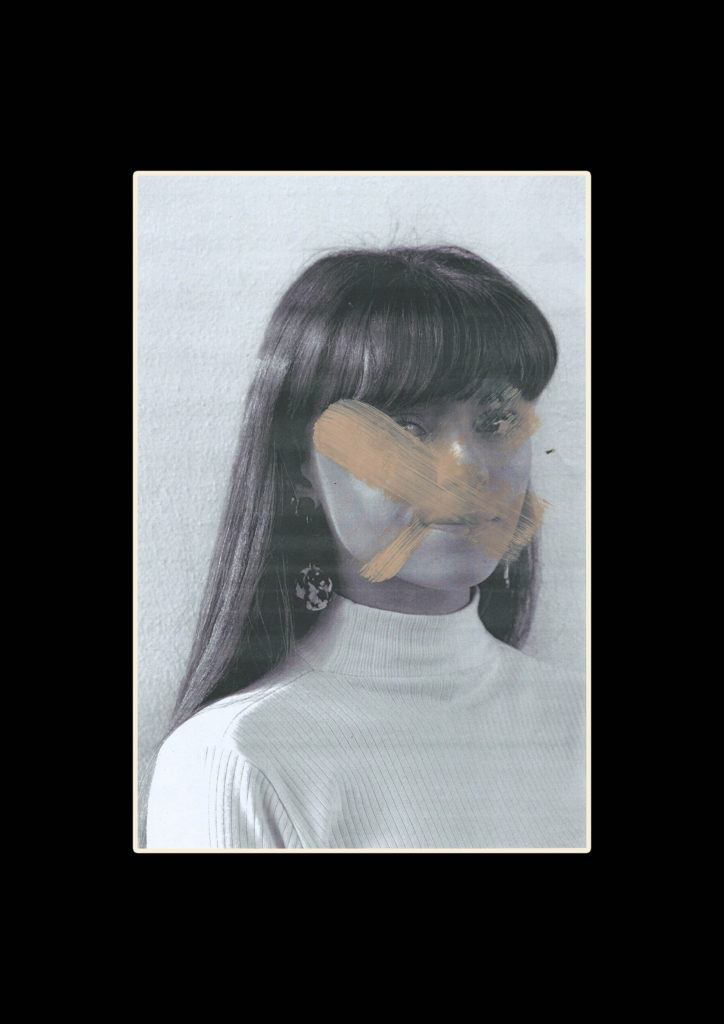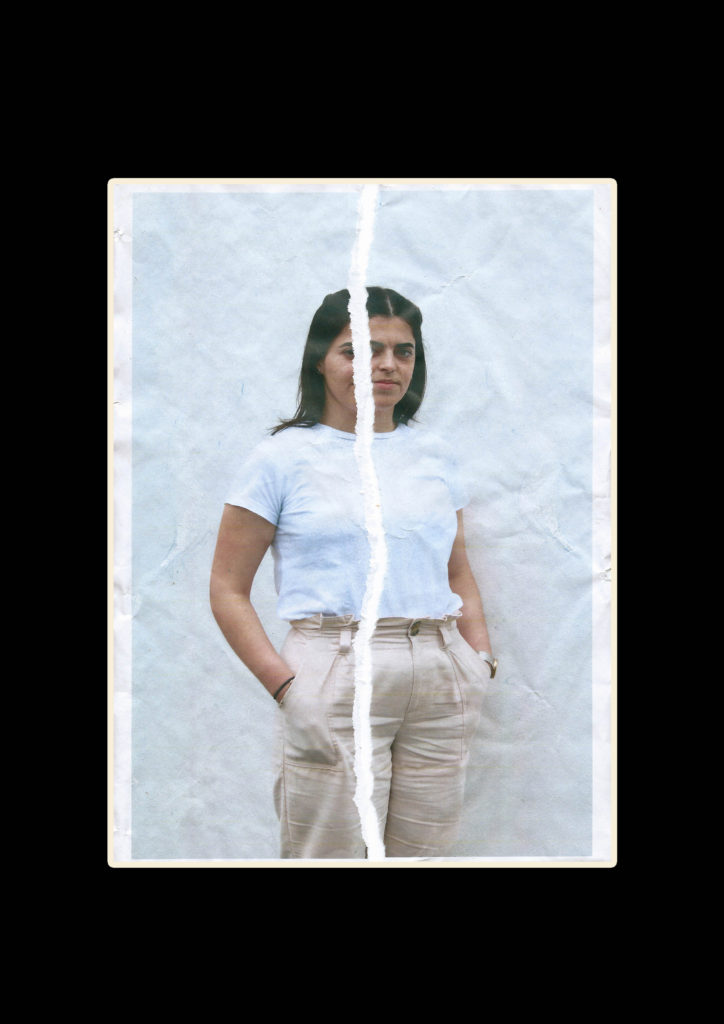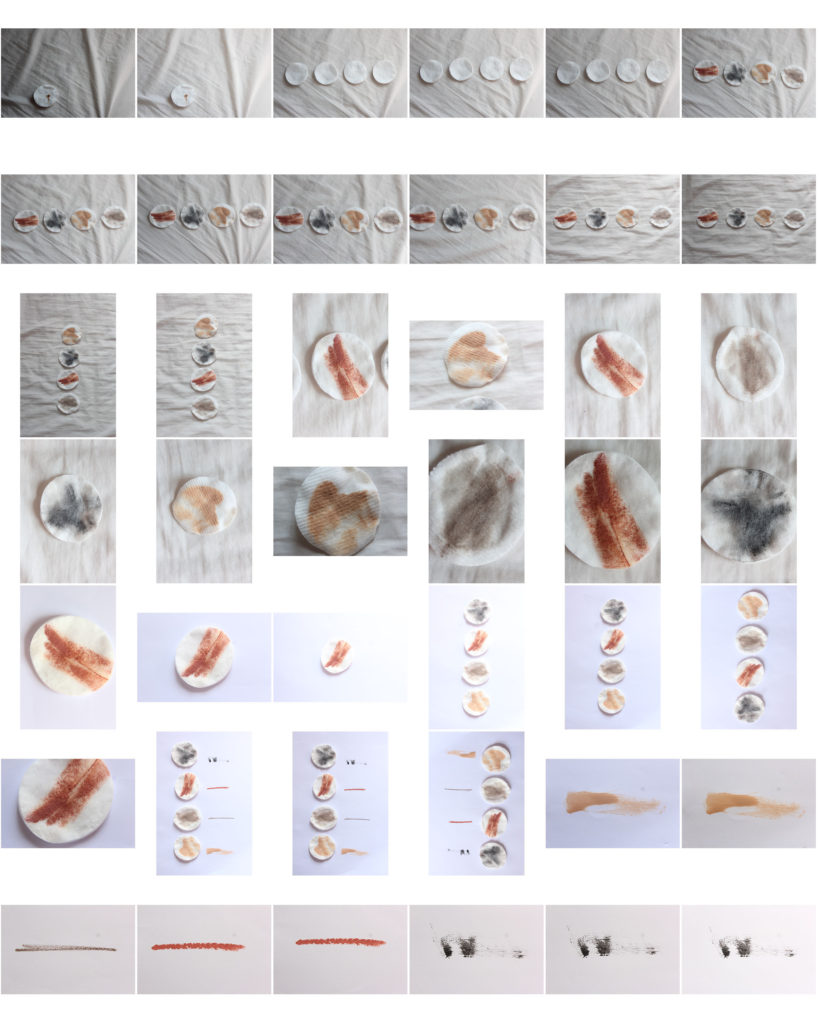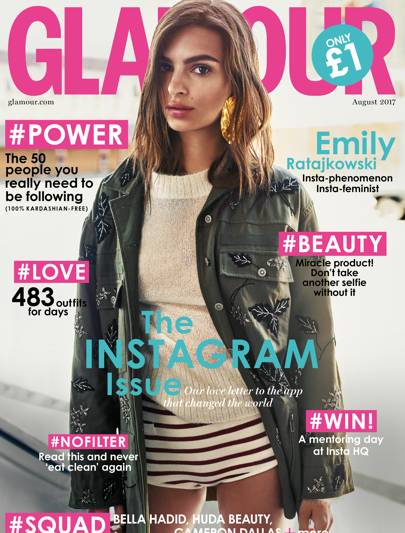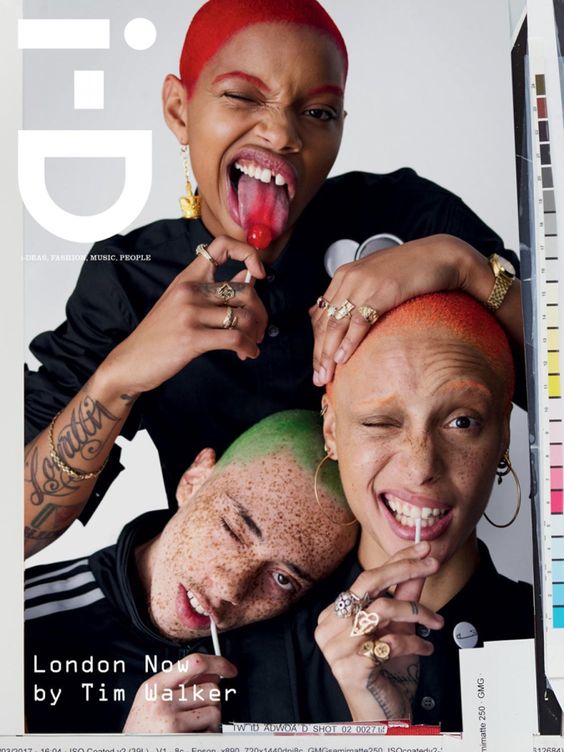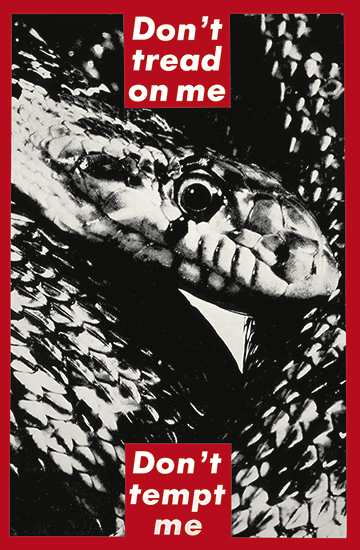I found the exam unit very successful in the sense that I feel my project topic fulfilled the brief in a way that fits my personal style. The title of variation and similarity allowed me to explore portrait photography around beauty ideals in the modern world. I developed my ideas by first looking at the work of Erwin Blumenfeld one of the early fashion photographers who set the expectations of beauty in the industry. I then looked into some of his work involving mirrors and the idea of reality and fantasy within the world of the mirror, linking reflections with the idea of narcissism. Next I looked at the work of Nigel Tomm and the distortion of the perfect image portrayed within magazines and the media, I was inspired by this to experiment crumpling folding and re scanning existing images from magazines. I then went on to produce my own portrait images in a simple style which I could print and edit in different ways. I wanted these portraits to show variation in beauty rather than being of models who all look the same. After printing out these images in degraded quality I gave them back to the people I took photos of so they could destroy, adapt and and correct their insecurities. I also used these images for other styles of editing including some where I added an overlay to the perfect face structure used by modelling agencies and warped it to fit the real shapes of my models. This was meant to suggest that not everyone can conform to these expectations to be the same, we are all individuals who do not all appear ‘perfect’. I also took close up photos of peoples skin inspired by Peter Devito’s work on changing perception on skin conditions , these images were intimate and display people insecurities in a artistic way rather than the negative way they are often displayed in the media. I compiled all of these edits together into a magazine layout reminiscent of a clastic fashion a beauty magazine which would promote the ideal of perfection. Together they show an broad representation of beauty and question modern ideals and pressures that we all face.
The main links between the exam theme ‘variation and similarity’ and my final piece is in the sense that their should not be one view of beauty and perfection and everyone looking the same, instead a variation is good an natural for humans and should be embraced by modern media to help problems with negative self image and mental health.
The final prints I produced display key elements from the magazine I think the way I presented them compliments the photos and helps their individual details stand out and not become over complicated. The composition of the close up images layered on foam board was hard to get accurate because I could not draw on the background image however I think how I lined them up with the parallel edges looks neat and organised. The composition of the other images was simple I arranged to of the images with the same face structure overlay together, they were both taken from different angles which I think helps show their individual identity. improvements
If I were to do this exam unit again I would keep the same concept because I enjoyed developing these ideas and producing the final outcome however I would probably extend the photoshoots and produce a larger range of edits to extend the length of the magazine and make it a more quality product. I would probably also develop the text elements further creating articles or pieces of literature to accompany the images and narrative them in a a way. I would also extent the magazine by adding images in the style of product adverts which would normally be seen in modern media promoting beauty product which claim to solve people problems with appearance. These would ben in a sarcastic and humorous tone maybe including images opposing the general and expected idea of these advert styles. I could have then used these adverts as my final prints and printed them as posters or on product packaging. However for the time given I think my response to the exam title shows my ability and development of ideas and concepts to produce a final outcome.





